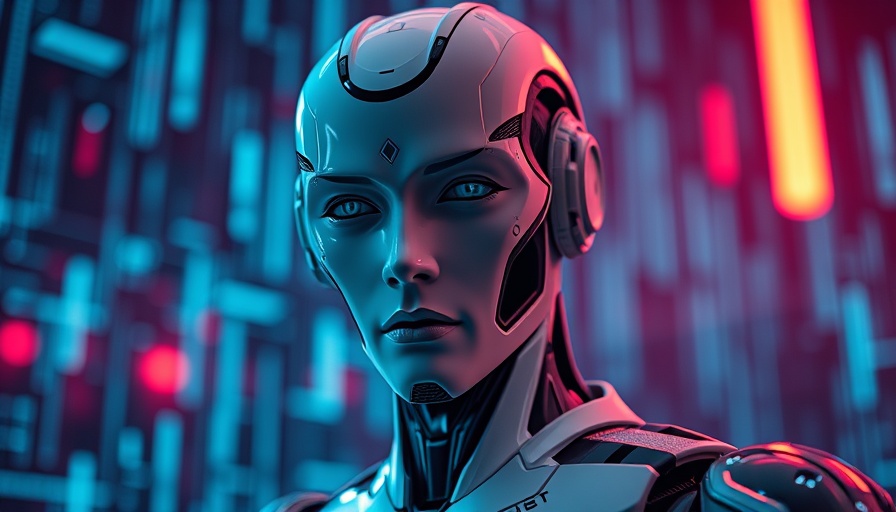
AI Disruption: Meet HRM, the Game-Changer in Reasoning
The recent unveiling of a groundbreaking AI model called HRM, developed by a startup in Singapore, is stirring excitement within the artificial intelligence community. Unlike traditional models like ChatGPT and Claude that depend heavily on extensive data processing and long chains of thought, HRM offers a radically different approach by emulating human cognitive processes. With only 27 million parameters, it proves to be a superior problem solver, narrowly outperforming its larger counterparts in reasoning benchmarks—defining a new era in AI efficiency.
In '100X SMARTER Than ChatGPT: This FREE AI Just SHOCKED The AI World,' the conversation revolves around HRM's groundbreaking approach to AI reasoning, prompting further analysis on its transformative implications.
How HRM Outshines Bigger Models
At the heart of HRM's success is its innovative architecture, which incorporates a high-level planner and a low-level worker. This setup mimics the dual processes often found in human thinking. The planner formulates a comprehensive strategy, while the worker swiftly executes the necessary tasks. This looped interaction enables HRM to refine its reasoning mid-process and adapt its approach based on problem complexity—ultimately allowing it to tackle challenges that models like Claude and OpenAI's systems simply cannot conquer.
Efficiency at Its Core: Speed & Simplicity
HRM's ability to deliver impressive results with minimal computational resources marks it as a groundbreaking technology. For instance, the model achieved a remarkable accuracy in Sudoku puzzles, with a 55% success rate at difficult levels, and a striking 74.5% in maze challenges—compared to a staggering 0% from competitors. By requiring only a small number of examples for training, HRM's design paves the way for rapid deployment, even on standard laptops and edge devices.
What Makes HRM Better?
Traditional models like ChatGPT are limited by their reliance on constant, uniform processing, tackling each task in the same manner regardless of difficulty. As a result, a single misstep can cause a breakdown in reasoning. In contrast, HRM scales its reasoning, allowing it to allocate cognitive resources dynamically. This enhances flexibility and enables it to solve complex tasks more effectively, showcasing an innovation that aligns closely with human-like thought processes.
The Potential for Real-World Applications
The implications of HRM's success are profound. Experts from Sapien, the company developing HRM, envision its application across various industries, including healthcare and climate forecasting, where it has already reported impressive accuracy rates. Since the architecture is open-source, stakeholders can experiment and improve upon its design, further fueling innovative use cases and research.
The Future of Artificial Intelligence: Going Beyond Size
The launch of HRM sparks a vital conversation about what the future of AI should focus on. As technology evolves, the quest for artificial general intelligence (AGI) appears increasingly feasible, shaped by models like HRM that prioritize reasoning and efficiency over mere data size. The way forward may no longer be creating larger models but finding smarter, more adaptable architectures that empower AI systems to think critically and act autonomously.
In conclusion, HRM represents a significant leap in AI reasoning capabilities, where innovative architecture meets practical applications. As the tech world keeps its keen eye on developments like these, we stand on the brink of a transformative era in artificial intelligence that promises to reshape industries as we know them.
 Add Row
Add Row  Add
Add 




Write A Comment